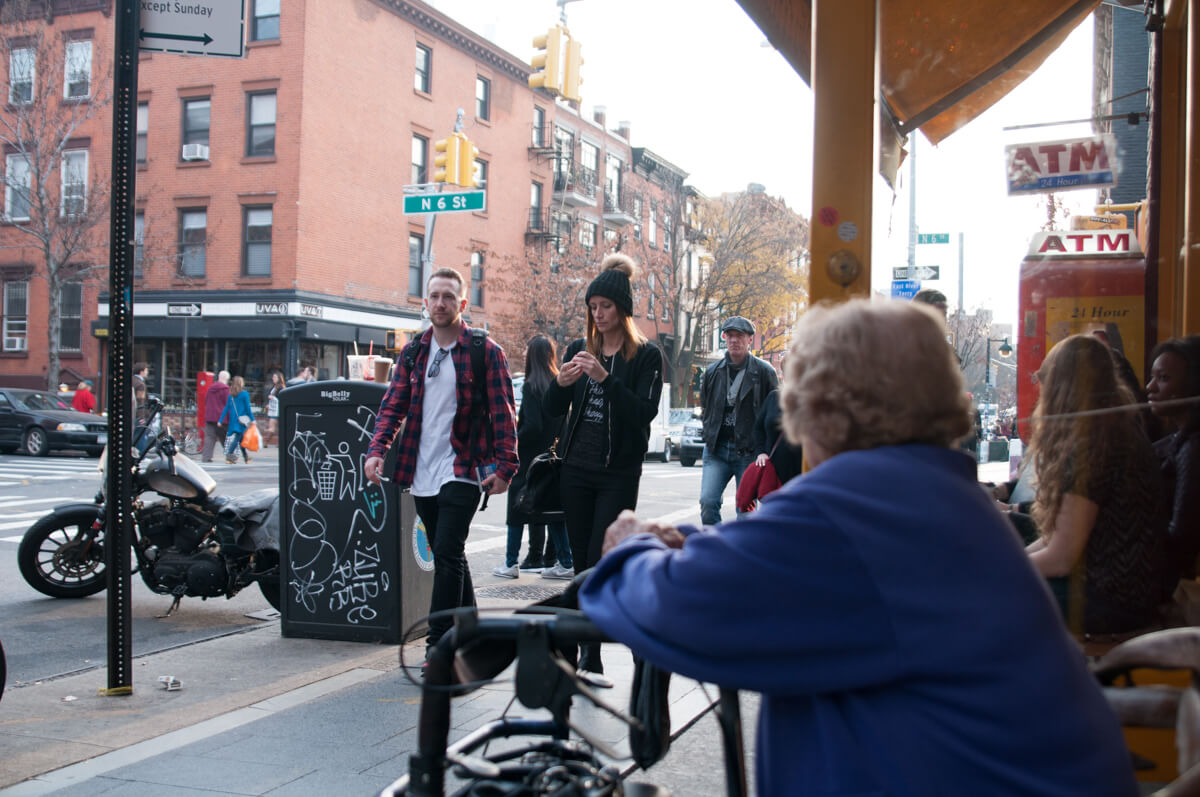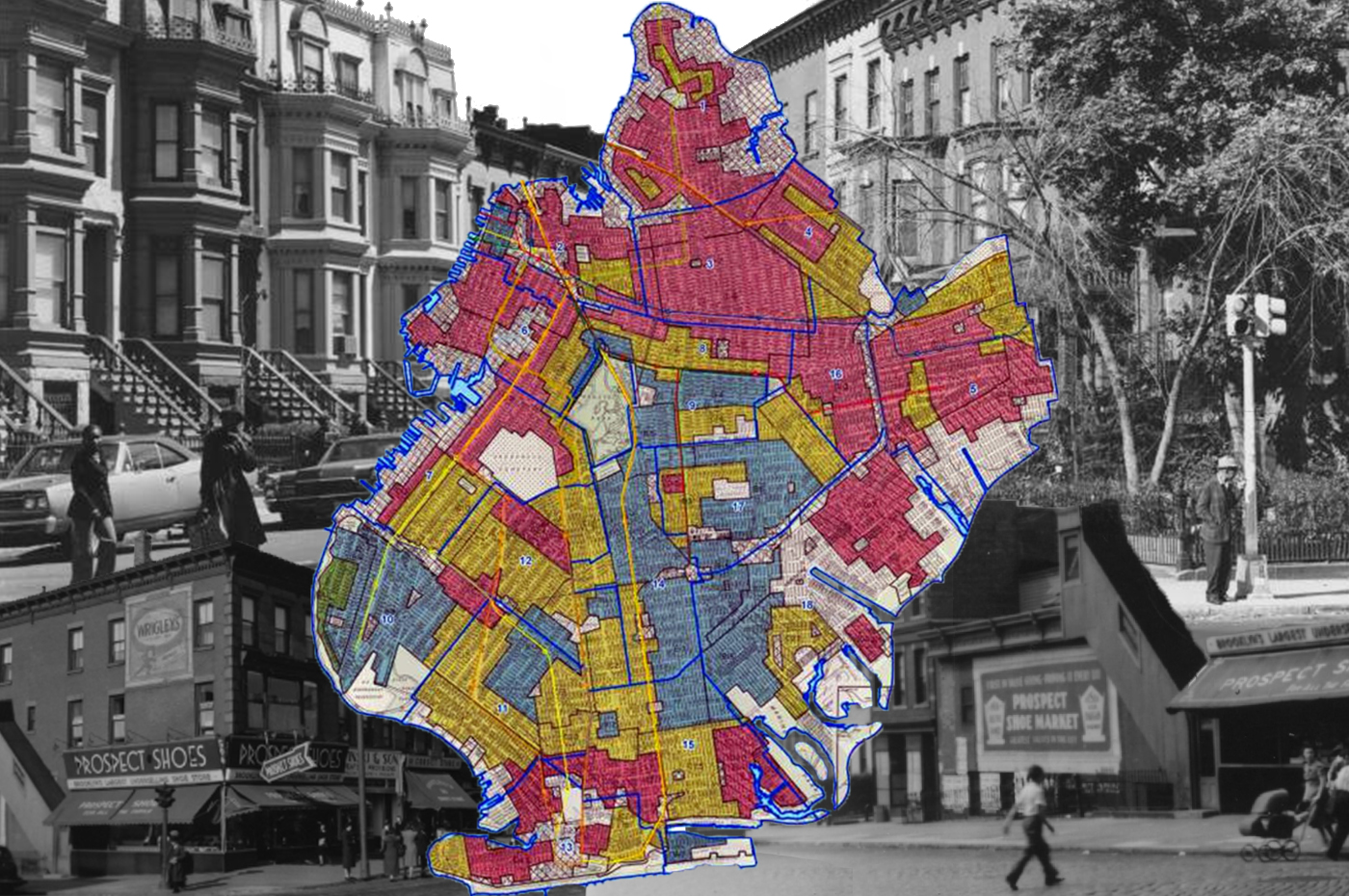Walkabout: The Boss, the Wife and the Rug Patrol, Part 3
Big trials got big press, especially in the days before 24/7 news coverage. Newspapers lived for circus-like trials, when everyone, high and low, spent their three cents on a paper to see what was going on in the courtroom. Dirty deeds had no place to hide. No one knew that better than the good people…


She was one of their own, a wealthy homeowner; wife to a rich and prominent doctor named Frederick Wunderlich. Leila was a perfect wife, born in Massachusetts, raised in New Orleans, and was beautiful, fashionable and educated. She ran a tight ship at home, with a staff of servants that she worked all day, every day, in order to achieve a home that was so clean and perfect that her husband could have operated on the floor. Her house was her pride and joy; her house was a reflection of herself, as perfect as was humanly possible in a dirty and uncivilized Brooklyn world.
And Brooklyn was certainly uncivilized. Her lovely Remsen street home was surrounded by people of her own social station; some of Brooklyn’s best and wealthiest folk. But among them was an imposter, a fraud, a wannabe named Hugh McLaughlin; an uncouth and uneducated Irishman from the docks who had bullied his way to the top of the political heap, and was now the rich and powerful Boss of Brooklyn’s Democratic Party. His house was right next door to the Wunderlich house, and according to Leila Wunderlich, it was Hugh McLaughlin who was her tormentor, the proverbial neighbor from hell.
Hugh McLaughlin would beg to differ, saying that Mrs. Wunderlich was the problem, because she insisted on having her servants beat the dust out of their large collection of rugs and carpets in the backyard. Not once in a while, but practically every day. The noise went on in the middle of the night, or at 5 in the morning, and if that wasn’t bad enough, the dirt and dust went right into other people’s homes, making it impossible for neighbors to open their windows in the hot summer. No, if there was a neighbor from hell, McLaughlin, as well as most of the block, knew from where the Stygian winds blew: from the yard of 165 Remsen Street, the Wunderlich home.
On top of being annoying and unpleasant, what Mrs. Wunderlich was having her servants do was also illegal. Public health regulations forbid the beating of rugs in the city, for obvious quality of life reasons, but also for reasons of public health. Brooklyn’s streets were filthy and germ-ridden. The Health Department employed a police force whose job it was to enforce code issues, and after many, many complaints by Remsen Street residents, and many warnings to the Wunderlich’s, the department police were finally able to catch the Wunderlich servants in the act, and make an arrest in June of 1901. For the complete story, read parts One and Two of our story.
Mrs. Wunderlich was quite put out by the arrest of George Meyerhoffer, an elderly servant who spoke very little English; a man whose sole job seemed to be to take care of the rugs. The Wunderlich’s didn’t even come to bail him out, but the case was postponed indefinitely when their lawyers finally showed up, and paid a fine. The Wunderlich’s promised to send their rugs out for cleaning in the future, and the case made it off the pages of the paper.
But only a few weeks later, in spite of the warnings and the complaints, Leila had the servants beating the rugs again. The Health Department police were called in again, told him to stop, and Leila told him to keep working, so this time both Leila and Meyerhoffer were arrested, and this time the magistrate issued a $500 bond for Meyerhoffer and a $500 bond for Leila, to make sure both of them showed up in court in September.
In September, Mrs. Wunderlich and poor Mr. Meyerhoffer showed up in court, but it was Leila who stole the show. She arrived in a carriage, dressed to the nines, and swept into the courtroom with the rustle of yards of silk. She was a beautiful woman, petite, with curly black hair which was tucked under a fashionable hat with a large ostrich plume. She was quite put out that she had to appear in court, and let the judge know it, to the horror of her attorney, Mr. George Elliot. She told the judge her husband could pay $100,000 bail for her, if necessary, and didn’t see the need to have bail, anyway, as she had done nothing wrong other than want a clean house.
Her lawyer tried to negotiate the bonds down, but the judge wasn’t having it, and in the end, Dr. Wunderlich, who was quite a bit older than his wife, and getting frail, showed up at the end to post the money, and then he went on to his practice. The case was set for trial in December. Leila stayed to talk to reporters. As far as she was concerned, this was all the fault of Hugh McLaughlin, who didn’t like her, and was using his ill-gotten power to make her life miserable. She told reporters that everyone else on the block was jealous of her and her home. “My house is as clean as any house in Brooklyn. And being clean how can it be dusty? It’s cleaner than any of my neighbors’ anyway.”
She went on to explain that she sent her carpets out to be cleaned just as ordered. But, she did have some smaller, more valuable rugs, and those she had the servants cleaning, but she insisted that those rugs were not beaten, but put on a wire rack and swept, so that the dust fell to the ground, and did not swirl around in the air. She also said that the neighbors were complaining, but it wasn’t her, it was the people in the office buildings on Montague and Court who were beating rugs, and the people who complained were wrong. In fact, as far as she was concerned, only Hugh McLaughlin’s complaints to the Board of Health got results, and that was because he pressured them to arrest her and her servant.
Hugh McLaughlin was a beast, according to Leila. His uncouth and uncivilized cronies made noise in front of her house, and when the Democrat Van Wyck beat Low for the mayoral race, in 1897, a brass band marched down Remsen Street in the middle of the night, and parked itself in front of McLaughlin’s house, playing all night long for a victory party. Ever since then, it was war between them. When she had her workmen put a door on a backyard fence, he called the Building Department to have them check on the work. She was unable to do anything in her home because of him, because he’d be on the phone, calling his cronies in city government to send department officials to harass her. She was powerless in this fight.
That November, Brooklyn Heights First Son Seth Low was again running for mayor. This time he was running against the Democratic Tammany Hall candidate Edward Shepherd, chosen by Richard Croker, the Boss of Manhattan. The Republican Wunderlich’s were very pro-Low. Leila went out of her way to prove it in a way that must have driven Hugh McLaughlin barking mad. The Wunderlich house had ten front facing windows. Leila hung festive patriotic bunting and American flags from every window, all of which had a portrait poster of Seth Low smack in the middle of the window. Each window had four rosettes in the corners, and all of them had smaller portraits of Low. She put up a large American flag on a pole that hung out over the street, and that flag had portraits of Low in each corner, as well. Right next door to the Democratic head of Brooklyn was the largest advertisement for a Republican candidate anyone had ever seen outside of a political rally. Leila had struck a blow for democracy. To make it worse, Low won.
She told reporters that she was ashamed that her neighbors seemed to be afraid to “show their colors.” She did so proudly, in spite of the low rabble that came to the McLaughlin house for their rallies. “There were some Irishmen astride truck horses,” she told a reporter, “You should have seen them. I have great respect for the horse, I think he is the most noble animal we have, but I hated to see him in such company.” When Low won, a band marched in front of her house, and serenaded her, along with the well wishes of five hundred supporters. Leila was vindicated and victorious. Hugh McLaughlin didn’t stand a chance against her. But then there was court….
On December 4, 1901, the trial to determine the fate of Mrs. Wunderlich and Mr. Meyerhoffer proceeded. The courtroom was packed, even standing room was full. All this to see what would happen in a minor court proceeding over a health violation. Leila showed up in full regalia, dressed in a richly embroidered grey skirt with a velvet jacket, a sable wrap, and a “jaunty and becoming little hat.” Meyerbeer’s case went first, and he was judged guilty of breaking the sanitary code. His fate would rest on Mrs. Wunderlich’s. The lawyers argued over the case for a while, until the judge got angry, and then the testimony began.
The health officers who had arrested Meyerhoffer and Wunderlich testified as to the offence: the old man was beating a rug when they came into the backyard, and when told to stop, Mrs. Wunderlich had told him to continue. The defense lawyer asked who gave them the authority to break into the house without a warrant, they said they didn’t need one. When called to the stand to testify, Leila explained that she had never been a defendant before, and then burst into loud tears. When she had composed herself, she told how the police had told her they were going to arrest old Mr. Meyerhoffer, she had stood up to them and told them that they would do no such thing. That’s when both of them were arrested.
The judge had heard enough. He found them both guilty, and ordered them to pay a $25 fine, or spend ten days in jail, each. Mr. Elliot, the Wunderlich lawyer quickly thanked the judge for his mercy, had the fine paid, and they got out of there, over the protestations of Leila, who wanted to fight the case as far as it would go. One wonders how long she made that claim. The case of the beaten rugs was over. Leila must have learned her lesson, and the neighbors had no more complaints.
A few years later, the house was put up for sale, and became the headquarters for the Red Cross. It was later torn down, and replaced by an office building. That building was a Building of the Day, which was what led me to this story. Hugh McLaughlin’s house is still there, but is now hidden underneath years of alterations and changes. It, and the house next door to it, were joined together with a new brick façade, and the building became retail with bachelor apartments above in 1924. Hugh and Leila would barely recognize their old block now.
Hugh McLaughlin died in 1904, here in his home at 163 Remsen. He had gone out with friends on December 7th and complained of illness. When he got home he had been taken up to bed, where he fell unconscious. Ironically, his wife called up Dr. Wunderlich, who immediately came from next door, but just in time to have McLaughlin die of a heart attack two minutes later. The powerful “Sage of Willoughby Street”, where he ran his empire for over thirty years, was dead at the age of 77.
The Wunderlich’s moved first to Sidney Place, and then to Manhattan. Dr. Wunderlich died soon after, but Leila, who was much younger, enjoyed the rest of her life with her children and grandchildren. She later moved to Bayside, Long Island, and it was there, in 1939, that she died, at the age of 80. In her will, she had requested cremation. She had spent her life fighting dust, and to dust she finally returned. GMAP
(Photo: Seth Low, second fron left, and officials crossing the new Manhattan Bridge, 1903. Museum of the City of New York.)









What's Your Take? Leave a Comment